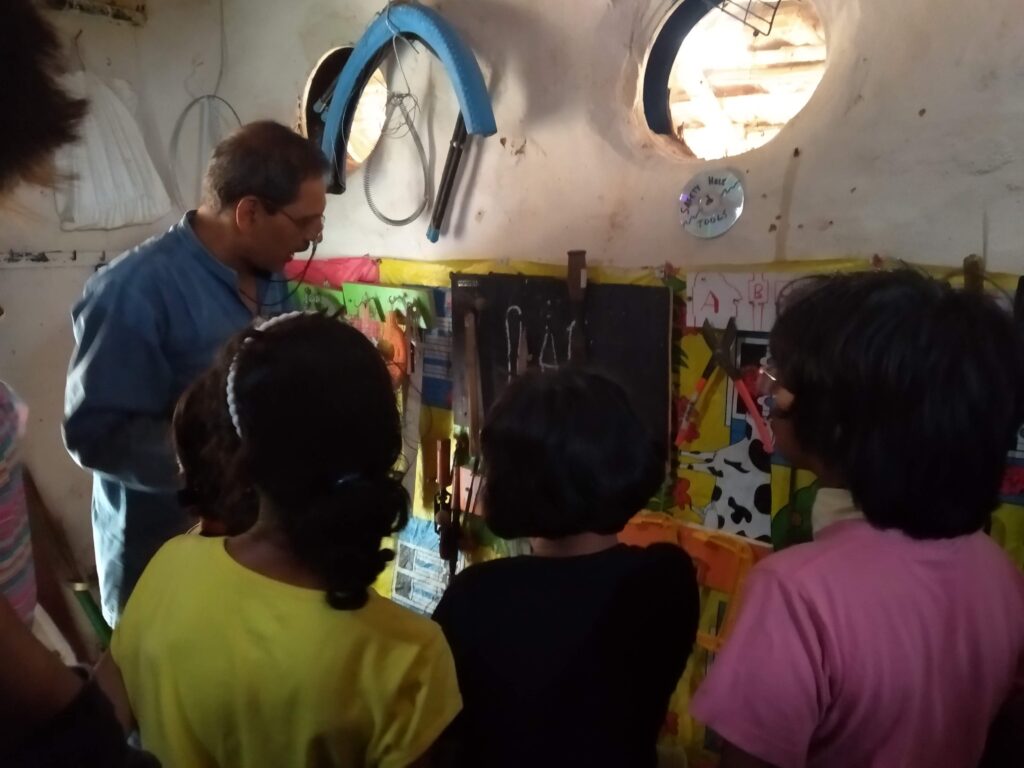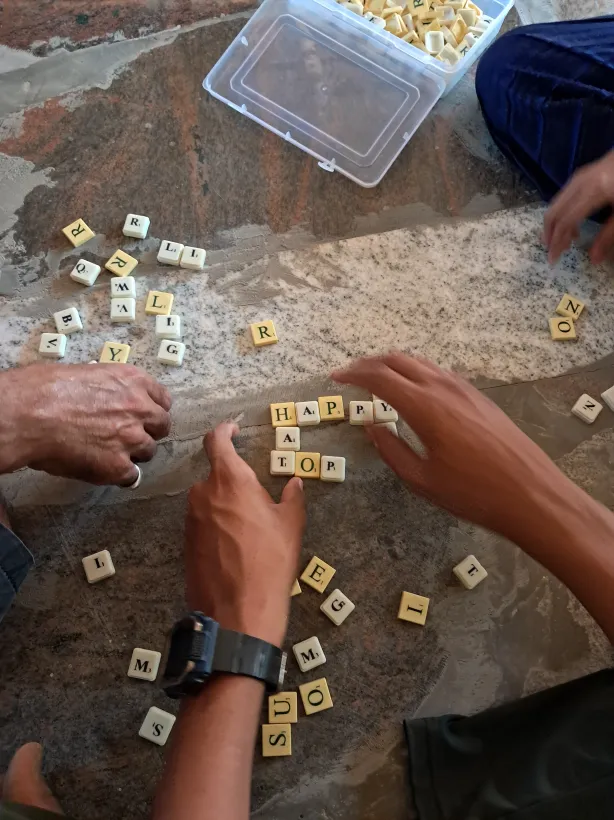Now, facilitation is utterly different from teaching children. At Aarohi, as facilitators we are not teaching the child any subjects or concepts. Rather our role is to ignite their inherent fire and curiosity to learn using various processes and tools. And the only qualification you need to do this is to be in the ‘Not Knowing’ stage. Wondering why so?

Let me share my experience with facilitating children of all ages. For the last 2 years, I had gotten comfortable mentoring teens at Aarohi wherein majority of our interactions were online. I had been in my comfort zone since most of these teens are already self-directed and with their age, I could afford to be verbal which is my usual expression. Cut to this year, I arrived at campus and was told to design the planning sessions for all ages
Now there were 2 new and immensely dynamic parameters added to the mix of facilitation. The first one being different age groups and doing so at a physical space which brings in its own flavours. The entire experience of designing sessions for 5 days in a row left me in a flummox. For the first time, I had to remould my mode of expression and go beyond verbal because not everyone is comfortable with words. For some, visual expressions help, for some physical, sensory type of explanations work better. Attention span varies across different ages, so instructions had to be simple and short – a double whammy in itself. Especially since I am used to longer form of content and would tend to use complex words.
The challenges didn’t stop there, I was nervous to my last bone because again I was fearing judgement. What if I mess up and mess up i did. The session flow was all over the place. My instructions were confusing. I would prepare the macro details and mess up the finer details during execution. Everyday, it was a hustle – asking my colleagues, my own brain rummaging through its last bits to ideate and figure out.
Learning always happens in the Pink Zone
In Lev Vygotsky’s theory, the “pink zone” (or Zone of Proximal Development, ZPD) represents the space between what a learner can do independently and what they can achieve with guidance, emphasizing that learning occurs most effectively within this zone. As they say, I was in the pink zone of learning – where I am doing something new and hence in sheer discomfort since I don’t know much about it and I am not used to it
The silver lining to all of this otherwise churning experience – a lot of empathy bloomed in my heart for children. As adults, we often overlook that children are constantly in the pink zone especially with tasks which have become second nature to us. Task that we have been doing for many years. Also, our impatience often comes in their way of curiosity and discovery. Our expectations hamper their zeal to figure it out themselves, even if it take a lot of time for us.
Read more about Vygotsky zone of proximal development here – https://www.simplypsychology.org/zone-of-proximal-development.html
Not Knowing helps all
When as facilitators you don’t know something, you can discover it along with the child. This makes the learning extremely enriching since you both are figuring it out together. Learning is not as per an agenda or curriculum. You pick up so many concepts along the way since you are open to receiving knowledge by practically doing it with the child. The bonus is you stay a learner all your life too with out the burden of knowing everything.
